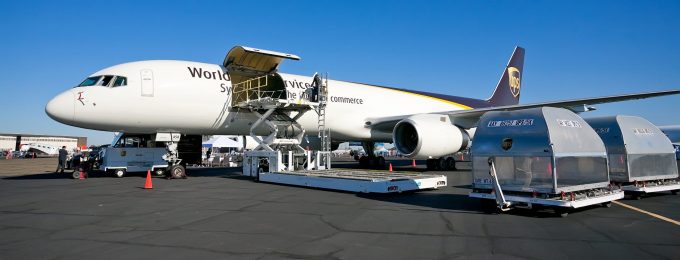Big Three US airline cargo revenues continue to shrink alongside margins and rates
Unveiling its numbers yesterday, American Airlines was the last of the Big Three US passenger ...

UPS and FedEx are shedding pilots as their airborne operations shrink, but growth in Mexico has seen them step up capacity there.
The downturn in parcel volumes moved by air prompted the integrators to accelerate the retirement of older aircraft and shed pilots. Indeed, reporting Q3 numbers, UPS reported its average daily airborne volume in the period had dropped 15.8% from 12 months prior
It put the blame on weaker demand and a strong shift of parcel flows from air to ground transport.
In September, UPS’s domestic flights were down 19% year on year, while FedEx’s domestic flying contracted 11%.
With a large number of aircraft headed for the exits and more sitting on the ground, UPS offered its pilots an early retirement package, sweetened by a flanking employment offer from PSA Airlines, an American Airlines subsidiary that runs regional feeder operations for its parent.
PSA is offering UPS and FedEx pilots a $250,000 signing bonus, plus for those with years of credit for flying large commercial aircraft, a direct pathway to fly for American Airlines.
According to one report, 193 UPS pilots have taken up the offer – more than the integrator bargained for; it was looking to eliminate about 167 positions.
FedEx management, describing its flight operations as “seriously overstaffed”, has more than 700 surplus pilots and has been trying to offload large numbers of them.
However, the picture is starkly different in the passenger airline sector. For example, like most of its peers, ASL is responding to a surge in air travel that seen has operators scrambling to field more aircraft and flight crew. US airlines hired more than 22,000 pilots last year and are on track for a similar increase this year.
For regional cargo airlines, the situation has not shifted dramatically, according to Stan Bernstein, president of the Regional Air Cargo Carriers Association.
“Regional carriers are holding on to what they have because there has been some contraction in volumes,” he noted, adding that UPS had cut back its regional flying in the Caribbean as well as in the US.
Meanwhile, the integrators are expanding in Mexico, which is enjoying a boom fuelled by near-shoring. UPS has boosted its capacity out of Monterrey by 35% and doubled its lift out of Queretaro to meet growing demand. The expansion comes as Mexican shippers seek to move goods to the US for the peak shopping season, but the capacity increases are permanent, UPS has signalled.
FedEx has placed a second ATR72-600 freighter into the arena, operating between San Diego and Tijuana serving 13 cities in Mexico. This gives shippers in the region daily connections to the US and Canada and five a week to the rest of the world.
Earlier, FedEx had placed an ATR 72-600 into Merida to support traffic from four markets in the region which it carries to Miami. Between May last year and June 2024, FedEx intends to put eight ATRs into Latin America and the Caribbean, plus four E-408s scheduled to come onstream before next May.
Comment on this article